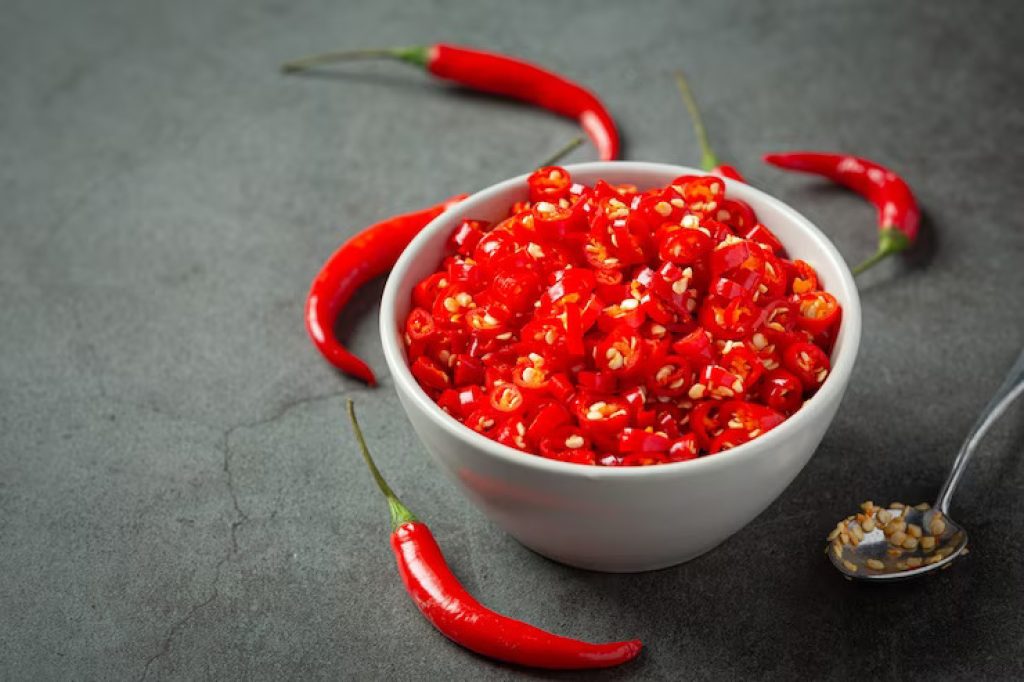Chili is a popular and flavorful dish enjoyed by many people. Whether you prefer a classic beef chili or a vegetarian version, it’s essential to know how long you can safely store chili in the fridge before it goes bad. In this article, we will explore the factors that affect the shelf life of chili, proper storage techniques, and how to extend the lifespan of your chili leftovers.
Introduction
Chili is a delicious and hearty dish made with various ingredients such as ground meat, beans, tomatoes, spices, and chili peppers. It’s known for its rich flavors and can be enjoyed on its own or served over rice, pasta, or with a side of bread. However, like any perishable food, chili has a limited shelf life, and it’s important to handle and store it properly to prevent spoilage.
What is Chili?
Chili is a type of stew that originated in the United States and is often associated with Tex-Mex cuisine. It typically consists of meat (commonly beef), beans, tomatoes, and various seasonings such as chili powder, cumin, garlic, and onions. The spiciness of chili can vary depending on the type and amount of chili peppers used.
How Long Can Chili Last in the Fridge?
The shelf life of chili in the refrigerator can vary based on several factors. On average, homemade chili can last for about 3 to 4 days when stored properly in an airtight container in the fridge at a temperature of 40°F (4°C) or below. However, it’s important to note that this is a general guideline, and the freshness of your chili can be influenced by different factors.

Factors Affecting the Shelf Life of Chili
Several factors can impact the shelf life of chili:
1. Ingredients
The quality and freshness of the ingredients used in your chili can affect its overall lifespan. Using fresh meat, vegetables, and spices can help extend the storage time.
2. Cooking and Storage Conditions
Proper cooking and storage techniques are crucial for maintaining the quality of chili. Ensure that the chili is cooked thoroughly and cooled down to room temperature before refrigeration. Storing chili in an airtight container or sealed plastic bag helps prevent moisture and odors from entering, which can accelerate spoilage.
3. Temperature
The temperature of your refrigerator plays a significant role in preserving the freshness of chili. Keep the refrigerator temperature at 40°F (4°C) or below to inhibit the growth of bacteria and other microorganisms.
4. Hygiene
Maintaining good hygiene practices while preparing and serving chili is essential. Always wash your hands, utensils, and cutting boards thoroughly to prevent cross-contamination.
Proper Storage of Chili
To maximize the shelf life of your chili, follow these storage guidelines:
1. Refrigeration
Once your chili has cooled down, transfer it to an airtight container or seal it in a plastic bag. Label the container with the date to keep track of its freshness. Store the chili in the refrigerator at a temperature of 40°F (4°C) or below.
2. Freezing
If you’re not planning to consume the chili within a few days, consider freezing it. Place the chili in a freezer-safe container or freezer bags, leaving some space for expansion. Label the container with the date and store it in the freezer.
Signs of Spoiled Chili
It’s important to be able to identify signs of spoiled chili to avoid any potential foodborne illnesses. Here are some indicators that your chili has gone bad:
- Off Odor: If your chili has a foul or off smell, it is likely spoiled and should not be consumed.
- Mold: The presence of mold on the surface of the chili indicates spoilage. Discard the chili immediately.
- Slimy Texture: If the chili feels slimy or has a slimy film on the surface, it has likely started to spoil and should be discarded.
- Unpleasant Taste: If the chili tastes sour, bitter, or off, it’s best to err on the side of caution and throw it away.
Extending the Shelf Life of Chili
If you want to extend the shelf life of your chili, consider the following tips:
- Proper Cooling: Allow the chili to cool down to room temperature before refrigeration. This prevents the formation of condensation, which can lead to spoilage.
- Portion Control: If you have a large batch of chili, divide it into smaller portions before refrigerating or freezing. This way, you can thaw and reheat only what you need, reducing waste.
- Avoid Temperature Fluctuations: Minimize temperature fluctuations by keeping the refrigerator door closed as much as possible. Frequent opening and closing of the fridge can compromise the quality of the chili.
- Storage Containers: Choose airtight containers or freezer bags designed for food storage. This helps maintain the freshness of the chili and prevents it from absorbing odors from other foods.
Storing Leftover Chili
If you have leftover chili, follow these guidelines for storing it properly:
- Refrigeration: Place the leftover chili in an airtight container or seal it in a plastic bag. Store it in the refrigerator within 2 hours of cooking.
- Freezing: If you won’t consume the leftovers within a few days, freeze them in a freezer-safe container or freezer bags. Label the container with the date to keep track of its freshness.
Reheating Chili
When reheating chili, it’s important to do so safely to avoid any potential foodborne illnesses. Follow these steps to reheat your chili:
- Stovetop: Transfer the desired amount of chili to a saucepan and heat it over medium heat until it reaches an internal temperature of 165°F (74°C). Stir occasionally to ensure even heating.
- Microwave: Place the chili in a microwave-safe container and heat it in short intervals, stirring in between. Make sure the chili reaches an internal temperature of 165°F (74°C) before consuming.
Freezing Chili
Freezing chili can be a convenient way to preserve it for future use. Here’s how you can freeze chili:
- Cooling: Allow the chili to cool down to room temperature.
- Portioning: Divide the chili into smaller portions based on your needs. This way, you can thaw and use only what you require.
- Freezer-Safe Containers: Place the chili in freezer-safe containers or freezer bags. Remove any excess air and seal the containers tightly.
- Labeling: Label the containers with the date and contents for easy identification.
Using Frozen Chili
When using frozen chili, follow these steps for safe thawing and reheating:
- Thawing: Transfer the frozen chili from the freezer to the refrigerator and allow it to thaw overnight. Alternatively, you can thaw it in the microwave using the defrost setting.
- Reheating: Once thawed, you can reheat the chili using the stovetop or microwave methods mentioned earlier.

Chili Storage Tips
Here are some additional tips to keep in mind when storing chili:
- Use Fresh Ingredients: Opt for fresh, high-quality ingredients when preparing chili to ensure its longevity.
- Maintain a Clean Environment: Practice good hygiene and keep your kitchen and utensils clean to prevent contamination.
- Rotate Stock: If you frequently make chili, use the “first in, first out” rule to ensure you consume the oldest chili first.
- Monitor Temperature: Regularly check and maintain the temperature of your refrigerator to ensure it stays within the safe range.
How to Tell If Chili Is Bad
If you are not sure if your chili is bad, there are a few things you can look for. Chili that has gone bad will typically have a sour or off odor. It may also have a slimy or lumpy texture. If you notice any of these signs, it is best to throw the chili out.
Conclusion
In conclusion, the shelf life of chili in the fridge is approximately 3 to 4 days, provided it is stored correctly. Factors such as ingredients, cooking conditions, temperature, and hygiene play a crucial role in determining the lifespan of chili. By following proper storage techniques, such as refrigeration and freezing, you can extend the freshness and enjoy your chili for longer periods.
FAQs
Q1. Can I eat chili that has been refrigerated for more than 4 days?
It’s generally not recommended to consume chili that has been refrigerated for more than 4 days. To ensure food safety, it’s best to discard any leftovers beyond this time frame.
Q2. Can I freeze chili with beans?
Yes, you can freeze chili with beans. Beans generally freeze well and maintain their texture when thawed and reheated.
Q3. Can I reheat chili multiple times?
It’s best to reheat chili only once. Repeated reheating can lead to a loss of quality and increase the risk of bacterial growth.
Q4. How long can frozen chili be stored?
Frozen chili can be stored for up to 3 to 4 months. However, for the best quality, it’s recommended to consume it within 1 to 2 months.
Q5. Can I add fresh toppings to reheated chili?
Yes, you can add fresh toppings such as diced onions, shredded cheese, or sour cream to reheated chili to enhance the flavors and textures.






